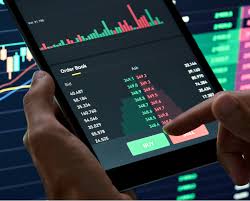Mastering the Art of Crypto Trading Charts

Mastering the Art of Crypto Trading Charts
If you’re venturing into the world of cryptocurrency, understanding Crypto Trading Charts is crucial for your success. As a trader, your ability to analyze these charts can significantly impact your investment decisions. For resources and deeper insights into trading, Crypto Trading Charts visit website where you can find valuable information.
Understanding Crypto Trading Charts
Crypto Trading Charts are visual representations of the price movements of cryptocurrencies over a specified period. They display various data points, including prices, volumes, and timeframes, making it easier to identify trends and make informed trading decisions. Charts come in several formats, such as line charts, bar charts, and candlestick charts, each with its unique attributes.
Types of Crypto Trading Charts
1. **Line Charts**: Line charts connect closing prices over a specific period, creating a simple and easy-to-read visual representation of price movements. They are excellent for spotting trends but may not provide enough data for detailed analysis.
2. **Bar Charts**: Bar charts offer more information than line charts by displaying the open, high, low, and close prices (OHLC) within a given timeframe. Each bar represents a specific time period, allowing traders to analyze volatility and price dynamics better.
3. **Candlestick Charts**: Candlestick charts are similar to bar charts but provide more visual data, making them popular among traders. Each candlestick shows the open, high, low, and close prices and can indicate market sentiment. The body of the candlestick represents the opening and closing prices, while the wicks indicate the highest and lowest prices during that timeframe.
Key Concepts in Reading Crypto Trading Charts

Understanding the technical aspects of charts is essential for effective trading. Here are some key concepts to consider:
1. **Trends**: Identifying trends—whether bullish (upward) or bearish (downward)—is fundamental in trading. Traders use trend lines to determine the direction of the market. A series of higher highs and higher lows indicates a bullish trend, while the opposite suggests a bearish trend.
2. **Support and Resistance**: Support levels are price points where a cryptocurrency tends to stop falling and may bounce back up. Resistance levels, conversely, are where prices often stop rising and may decline. Investors often look for these levels to make trading decisions.
3. **Volume**: Volume measures the number of coins traded during a specific period. High trading volume often indicates strong market interest, while low volume may signal a lack of interest. Volume analysis is essential for confirming trends and patterns.
Technical Indicators
In addition to analyzing price movements through charts, traders often use technical indicators to aid their decision-making. Some popular indicators include:
1. **Moving Averages (MA)**: Moving averages smooth out price data over a set period, helping to identify trends. The two most common types are the Simple Moving Average (SMA) and the Exponential Moving Average (EMA).
2. **Relative Strength Index (RSI)**: The RSI is a momentum indicator that measures the speed and change of price movements. It ranges from 0 to 100 and helps traders identify overbought or oversold conditions in a market.
3. **MACD (Moving Average Convergence Divergence)**: The MACD is a trend-following momentum indicator that shows the relationship between two moving averages. It helps traders identify potential buy and sell signals.

Chart Patterns
Chart patterns are formations that appear on trading charts, and they can indicate potential price movements. Some common patterns include:
1. **Head and Shoulders**: This pattern often indicates a reversal trend. It consists of three peaks: a higher peak (head) between two lower peaks (shoulders).
2. **Double Tops and Bottoms**: These patterns indicate a reversal in the trend. A double top is a bearish reversal pattern that occurs after a bullish trend, while a double bottom signals a bullish reversal after a bearish trend.
3. **Triangles**: Triangular patterns can be ascending, descending, or symmetrical and indicate potential price consolidation before a breakout in either direction.
Combining Analysis Techniques
Successful traders often combine multiple analysis techniques to enhance their predictions. For instance, using chart patterns alongside technical indicators can provide a more comprehensive view of market dynamics. Additionally, fundamental analysis—examining news and events that affect the crypto market—can complement technical strategies.
Conclusion
Mastering Crypto Trading Charts is an ongoing process that requires practice and continuous learning. By developing your skills in chart analysis, understanding key concepts, and incorporating technical indicators, you can enhance your trading strategy and make more informed decisions. Remember that while charts are powerful tools, they should be part of a broader trading plan that considers risk management and market fundamentals.
Whether you’re a novice or an experienced trader, understanding Crypto Trading Charts will empower you to navigate the cryptocurrency market with confidence.

